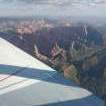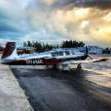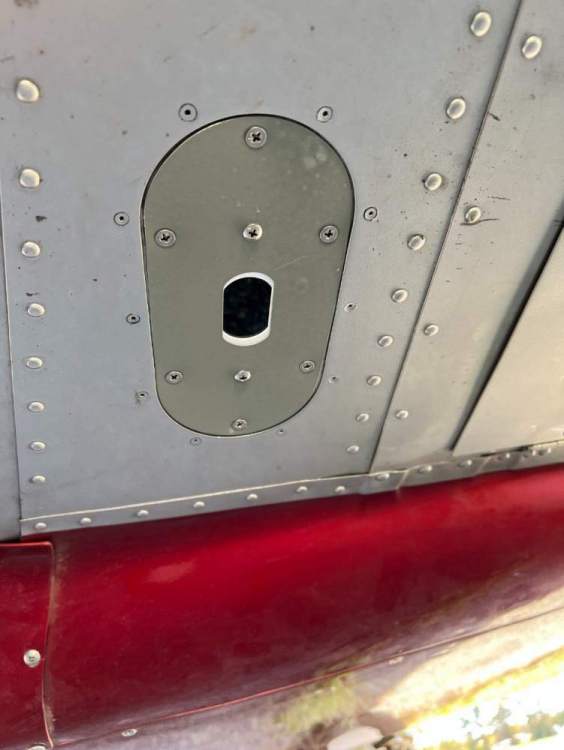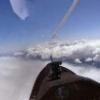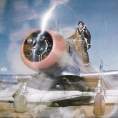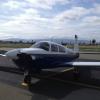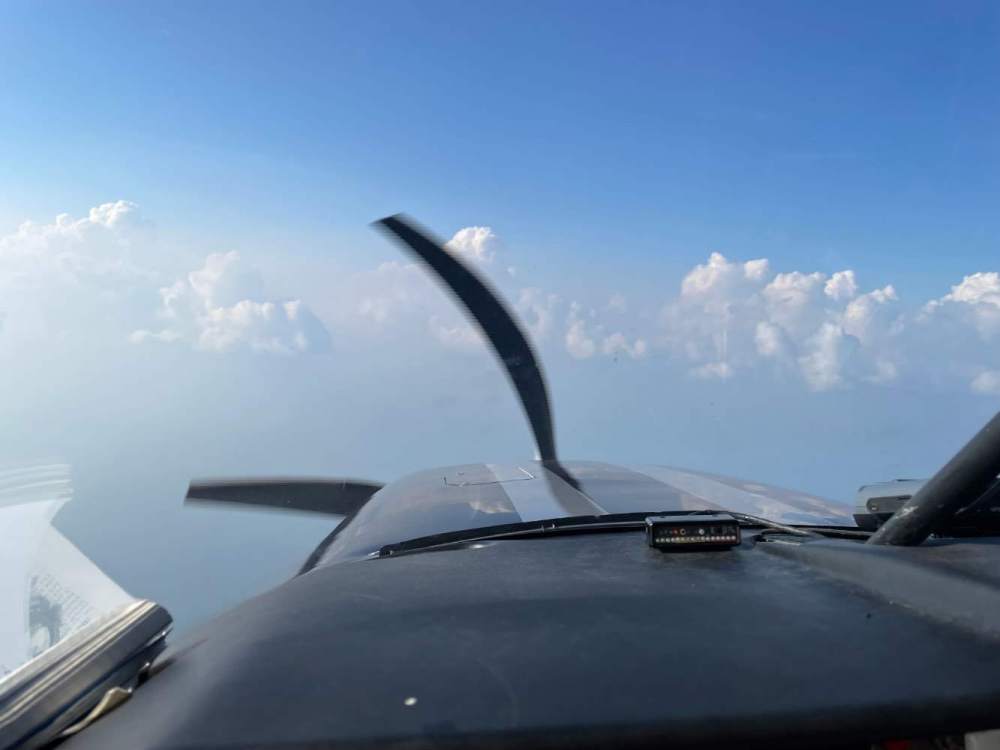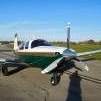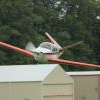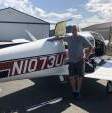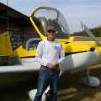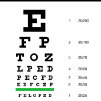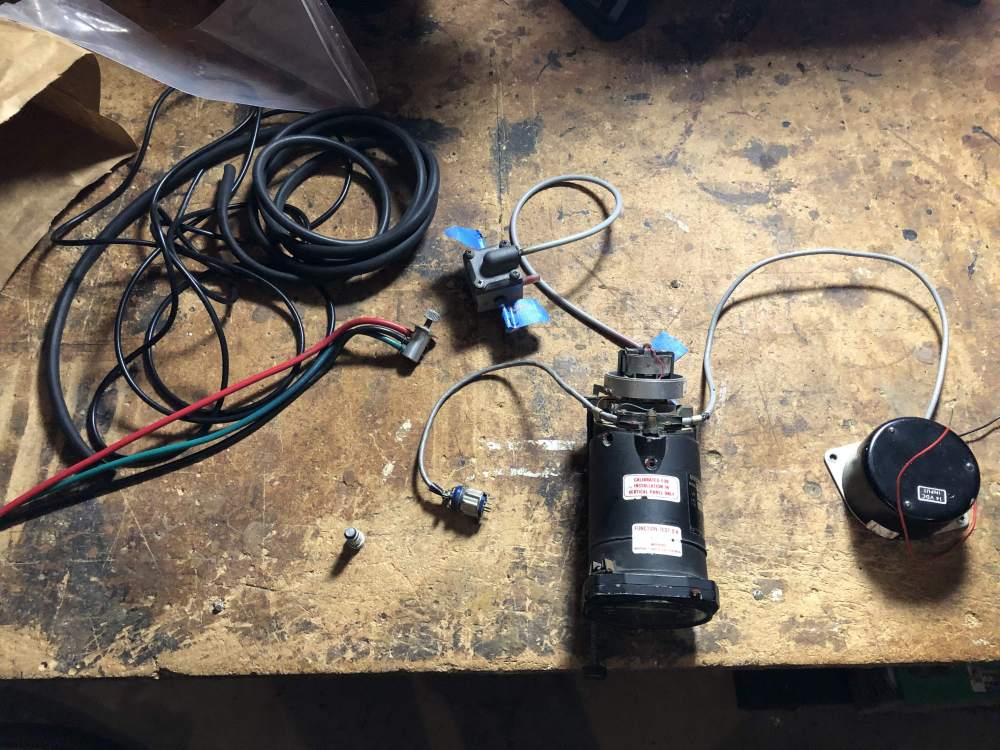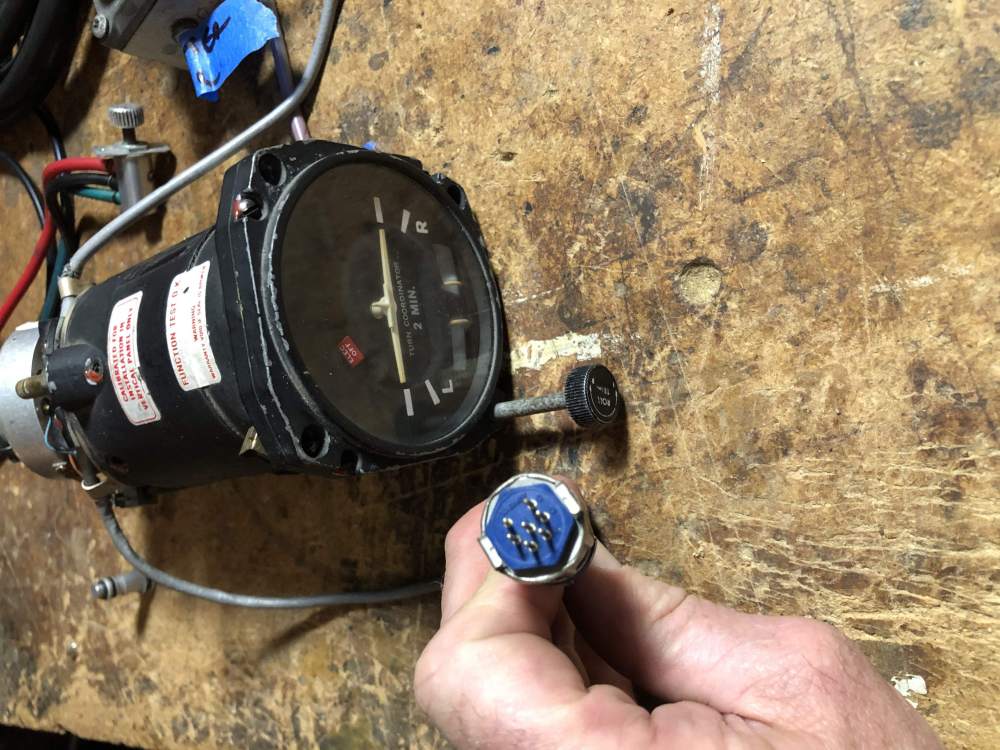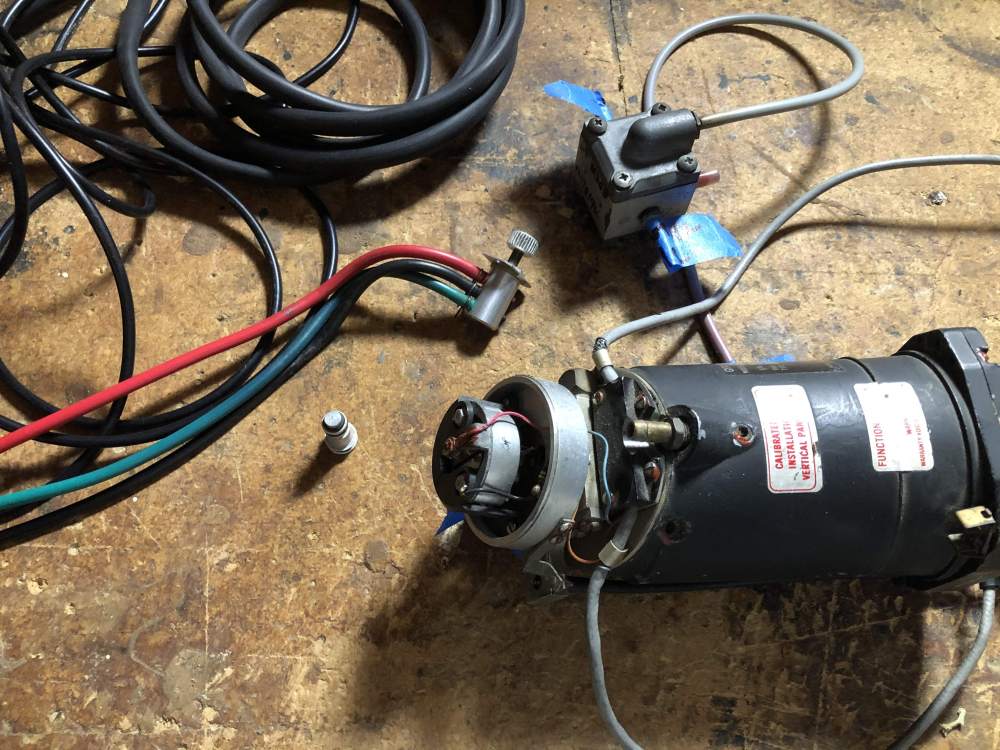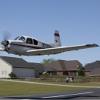Leaderboard
Popular Content
Showing content with the highest reputation on 11/05/2021 in all areas
-
I've used both. Couldn't tell any difference. Maybe Barry lasts 15 years six months and Lord lasts 16 years. Or is it the other way around? Being a CB I usually buy Barry. FWIW. I was working on the computers at a mining supply company back in the 80s and saw a set of engine mounts that looked exactly like the ones for my F. They were from Lord. I asked what they were for and he said they were for a stationary diesel engine. I asked how much they were? He said $25....3 points
-
3 points
-
I sure wouldn't want to keep an old ugly stormscope in a modern glass panel, but you couldn't pry my Wx-500 out of my hands under any circumstances. Modern spherics needs to be displayed on the glass MFD - wasn't that the point of the nice MFD and investment in glass? Sent from my iPhone using Tapatalk3 points
-
@Microkit Thank you! I had mine installed during annual. Still waiting for the bill to see how much it cost. Will post when I get it. Let me say the LHS is fantastic. I did not fly for 2 months (simple annual, no problems!! but that is another story) so I was a little nervous when I went out for my first flight yesterday. A little background. This is my third Mooney. Started with a C model which I could land on a dime. Moved to a K model. By the end of the first year I could put it down anywhere. A year ago I bought an Ovation. Given my schedule I only put 50 hours on it. I had a lot of trouble with the landings. Never could get that last few feet right. Flare to low, flying it on the runway. Flare too high, dropping it. Never pretty. I was getting better the summer before annual. Back to yesterday. It was a little windy, but within my normal limits. I almost cancelled anyway given that it had been 2 months but I pressed on. My home airport runway is 2,440' x 40' with trees at one end and a 20 foot drop to a highway at the other end. Needless to say, coming with an Ovation, you must be on your numbers and down in first third of runway. I decided to fly to another nearby airport with 4,470' x 75' runway to practice. My first landing was high and hot but when the LHS started talking at 200' and asked for a gear check, I was able to calm things down. The countdown was great. I was on speed, on target, hearing the numbers drop. When I got to 20, I had the right sight out the window and started the flare. by 10' I was in a great position and pulled the power back. At 5' I was in the perfect attitude and had one of my best landings ever in my Ovation. Let me say that again, after 2 months of not flying, I had a near perfect landing. The LHS made that possible. It also had a calming effect. I felt I had more time to get the speed and power just right in the flare and take my time getting it on the ground. Was this a fluke? I did 2 more patterns at this airport. Now, I almost never do touch and go's in the Ovation. First of all we are not allowed to at our home airport, so I don't do too many. Second of all, even on a 4,000' runway, I find by the time I am down, reconfigured and ready to go I have eaten up a lot of runway. Not this time. On both approaches I came in on the numbers, touched down in the first 500' and had plenty of runway left. Moved flaps to takeoff position, adjusted trim, and firewalled it (slowly). Took off and did another touch and go. After 3 landings it was time to head home for the real test. Approach was good, it was a bit windy on short final. Coming in over the trees always does strange things to wind but I was focused on the approach end of the runway. There is a little valley after the trees, before the runway so the LHS was a little confused. It called out 50 over the trees then 70 then dropped to 30 right before the runway. I expected this. Again, the final countdown to 5 was great, and calming. One of my best landings and home airport ever. I was off with minimal braking well before the other end. Sorry for the long post but this tool can really make a difference. What I wasn't expecting is the calming effect. It basically makes you feel like you have more time from the approach to the round out to the flare. For comparison sake, I have just over 1,000 hours, 600+ in Mooneys but only 55 in the Ovation. Thank you! To anyone not sure if this is worth it, if you are happy with your landings most of the time, it is a nice to have. If your landings are all over the place, this is a must have. Given what we spend on our airplanes, it is a small price to pay (well, let me see what the shop charged to install it). Picture below installed under right wing, between gear and fuselage3 points
-
2 points
-
This is why I added a release to my baggage hatch. You can't count on getting out through a window unless the crash breaks it.2 points
-
The real problem is the disagreement between buyer and seller on what idle time is worth. From a buyer perspective, you'd want it discounted with the assumption that the engine has corrosion and it's going to need work overall. From the seller's perspective, it was fine last it ran so it's worth every penny it was worth then because it hasn't been used since. This is a gap that's hard to bridge in the real world which is why most thoughtful buyers pass and some unknowing buyer takes a chance without really thinking it through. Some get lucky and some don't.2 points
-
I did notice after getting my booster shot that I don’t get any radar altimeter readout on my G500 display. Not sure if it’s related.2 points
-
For part 91, just IRAN it via a good shop, not overhaul. Cheaper, fixes everything you need and nothing you don’t. Overhaul means grinding the blades and if they end up thinner than spec (real risk, particularly if overhauled before) then you pay $$ only to trash the prop in the end. BTW a small amount of grease seepage past the seals is not a big deal. Usually its Aeroshell #6 grease, which likes to break down and liquify. If it’s minor, you can just keep an eye on it in this state for a very long time, top it off periodically with a couple squirts of #5 into the hub. If you get it IRAN’d the seals will get addressed. If the prop was IRAN’d or overhauled shortly before going on your plane 2 years ago, it’s probably best just to watch it. But with the AD hub, I’d be inclined to get rid of that painful AD if the prop is gonna come off the plane for service. In that case a different prop altogether may prove the most economical path.2 points
-
Category II and III ILS approaches often require a radar altimeter to determine the minimum descent height. The FAA is saying that these approaches may be NOTAMed out of service due to the adjacent band RF interference from the 5G sites. It is technically true that a radar altimeter with sufficient filtering can operate near a C band 5G site. But many legacy radar altimeters were designed when 3.7-4.2 GHz was a satellite downlink band with only weak signals near the ground (the satellite transmitters were 22,000 miles overhead). Few if any Mooney aircraft or pilots have the special crew and airframe approval needed to use those Cat II and III approaches so it’s not a problem for our flying.2 points
-
2 points
-
The other day I approached my home airport and there was some patchy see through fog from above…(4,000’x 75’)I could see every runway light….as I was landing I was on centerline at 1’ with the plane nose up…then I hit a patch of fog that had no horizontal see through, but completed the landing with confidence, and was out of that patch in a few seconds later. I would have landed on the numbers(if I had to do it again) but with a system I have learned to trust, I felt safe. Consider the alternatives…taking to a go around that close to the ground is not without risks.2 points
-
Probably not a great idea, the lightning info on ADSB andXM is a few 10+ minutes old whereas the Scope is real-time. I had a bad encounter with storms this summer with XM providing info drastically poor albeit I was to close while the stormscope provided real-time info enough to navigate me out of Dodge.2 points
-
Some critical questions include where is it located and how was stored? Southeast is high humidity and engine corrosion. Near an ocean can add air-frame corrosion. Why did it never come out of annual? Usually they are just left and go out of annual, not start one and never finish. That is a red flag in itself. Good points have already been made. Do you have the funds available to fix issues (easy 15 to 20 AMU) and rebuild an engine? Then add at least basic ADS-B out? Now you likely still have a panel from the 80's to upgrade. Does the price reflect this? Paying for a already flying airplane starts to look more reasonable.2 points
-
While they are in there . . . find a used WX-500 and have it display on whatever you're planning on for the new panel. Sell the WX-900 for a few bucks to someone's whose just went paws-up.2 points
-
I was able to get a hold of someone at CIES today and worked out the issue. They are going to send the issue to engineering and have them review it to see if they need to change the application guide for the G model. They are changing the order to 2 senders and billing accordingly. Thanks everyone for your help. Craig2 points
-
Be careful how much you buy. It does have an expiration date.1 point
-
Thanks for the observations. The dark marks on the brake line are just grease/oil and good point about the safety wire. That pic was prior to removal and it was fixed on reinstall.1 point
-
Ok, I'll add my two cents' worth: The iPad mini (latest two versions I believe) has the brightest display of any iPad. The iPad mini is a perfect size to mount right on the yoke. I like horizontal since it allows an unobstructed view of the panel (plates can be positioned and zoomed), but some people prefer vertical so the whole plate is visible. 128 GB of storage is quite enough to hold the entire Foreflight U.S. database. A matte screen protector will almost completely eliminate reflections. The lock/unlock issue can be eliminated if you're running ForeFlight simply by configuring it to never lock while running the app. It's worth hooking up a USB charger port, either built-in or tapping into the cigarette lighter plug (whatever it's called these days), and then running a charger cord from there to the ipad on the yoke to guarantee continuous power. Much easier than worrying about %. On a bright sunny day the iPad will heat up quickly and shut down if not either vented (left knee vent directed up at it) or sunblocked (slap-on window shade). Preferably both. Avoid using a case on a sunny day. A two-way link between the aircraft GPS and the iPad is crucial (VFR or IFR). There are many variations; I use a Garmin FlightStream 210 to link to a GPS-400W via Bluetooth. The main thing is that ADS/B traffic, weather, and flight plans/approaches are all displayed on the iPad. Also, the ability to do flight planning at home and then transfer the flight plan(s) to the GPS unit in the aircraft via Bluetooth is fantastic. Changing waypoints or approaches on the GPS unit automatically updates the iPad, and vice versa. iPads are so cheap compared to aviation-specific equipment (priced in AMUs), that it's worth getting one or two, dedicated for use in the aircraft. There's no need to buy new! The next-to-newest generation or even newest generation can be purchased used and they still work like new! The FlightStream 210 (and I assume other devices) will accept links to 2 Bluetooth devices, so it's easy to have identical setups for pilot and co-pilot: 2 iPad minis, 2 yoke mounts, 2 charger cords. That also gives you an automatic, instant backup if one of the iPads shuts down from overheating. Try to mount the ipad as perpendicular to the ground as possible while still being easy to view. If you ever need the ForeFlight version of the artificial horizon, it won't work if the iPad is laid too flat. I don't know about you guys, but I have yet to find a nice, compact yoke mount, so I built my own.1 point
-
My understanding is those little emergency hammers are only good on car side windows, since they're tempered glass. I wouldn't have assumed they'd work on acrylic windows. Are the side windows easier to kick out than the windshield?1 point
-
Three years ago I ordered a 30 gallon drum from AccuChem and had it delivered right to the hangar. Then I ordered a bunch of 2.5 gallon jugs from Uline and filled them from the drum. It was only $104 to ship the drum back then, $124 today.1 point
-
yes, TKS fluid is all the same. Shipping is a really ig part of the cost. I don't recall exactly, but I believe that's why nobody sells the 2.5 gallon tubs anymore - big enough to require HAZMAT handling, whereas the one gallon bottles don't. Pity, I really liked the 2.5G tubs. -dan1 point
-
On glare shield AOA is definitely the way to go for many reasons - eyes down the runway and not in the cockpit looking at a AOA or a ASI. One does not need the HUD display to get an excellent on glare shield AOA. Here is my device that is just a light bar, but down at the end of the glare shield and serves entirely the same utility as the hud display. But you see it lies flat so no hud needed.1 point
-
Oh, crap, I bet you weren't wearing your tin foil hat when you got your booster. The foil keeps the 5G rays from activating the nano-particles in the vaccine.1 point
-
1 point
-
Use a Sandisk or other quality name card. 16GB minimum…preferably 32GB. There is no hard-and-fast requirement to buy the Garmin-branded cards. I usually carry a spare set in a small hardened case, and format them in between each major revision to ensure I always have fresh data on a clean card.1 point
-
I have the Alpha Systems Eagle with HUD on my glare shield, and use it on every landing. Calibrated properly, it caused me to reduce my approach speed by nearly 5 knots.1 point
-
if you do decide to get it overhauled you might consider finding a serviceable hub that eliminates the eddie current inspections or another method that will eliminate the inspections. @Cody Stallings Talk to Cody Stallings. He is good.1 point
-
Ref Amel clamps. If you have to replace any due to the rubber deteriorating, use the ones with teflon instead of rubber, near as I can tell the teflon lasts a very long time and oil doesn’t make it swell up and go soft like rubber does.1 point
-
Next week would be 4 weeks for me. Fingers crossed that happens so I can get my annual wrapped up in a reasonable time frame.1 point
-
Maybe, but this is what I was referring to: ”The Surefly and VGs reduced my typical cruise performance from about 173 kts to about 169 kts so there is a bit of a speed penalty.”1 point
-
Unless your just itching to spend $11K on a new prop, I would definitely have that propeller checked out. If that’s the F7666A-2 Blade you may possibly have the material to O/H that propeller an save yourself $9500. just my thoughts1 point
-
Speaking of transition training…. Don Kaye is quite the guru… Is there a resource for training at the club? Or is it a bunch of pilots with similar non-Mooney back grounds? I first found the value of the extra expertise in aviation during the check ride for the PPL… Mid check ride, the DPE gave a demonstration on how best to fly a C152…. Hands-off, steep turns, maintaining speed and altitude…. Nicely trimmed out. (I must have been sawing at the yoke in comparison ) Wondered why the CFIs I was working with didn’t demonstrate that level of precision… It turns out the C152 can be flown with precision… similar to an M20J… every knot means something… Controlling the extra knots, or the too few knots is key to each maneuver… Hopefully you have a Mooney CFI to really demonstrate the skill that the plane was born with… Blame the ‘system’… often CFIs are in the roll for a set number of hours… a stop along the way to their next level… flying jets…. The coolest CFIs enjoy training… even when they fly jets on the side…. Don’t be afraid to ask for the Mooney specific CFI…. You might be paying for somebody else to experiment along with you…. The same is true with other airframes… You just want the guy who has paid attention to every knot of the airframe you want to learn… PP thoughts only… my first Mooney transition training was mediocre at best… It helps to know that it exists… and how best to ask for it… PP thoughts only not a CFI… Best regards, -a-1 point
-
I carry SwitcheOn and I have them in stock. I also am a dealer for Tanis and I have their popular cabin heater. So I control my engine block heater with SwitcheOn and turn my Tanis heater on about an hour or two before I go to the airport so my avionics and interior are warm soaked for startup. It works great. https://www.gallagheraviationllc.com/switcheon.html <-- Order SwitcheOn here1 point
-
They are just SDHC cards 8-32GB formatted FAT32. Don't use the larger SDXC cards; they're not compatible. Skip1 point
-
I think this is the same sensor: http://www.2040-parts.com/ns-norwich-aero-aircraft-temperature-sensor-probe-102-00002-i996359/ You just need to find a connector for it. I think they are used in Cirrus aircraft. I think they are both nickel RTDs1 point
-
I have been flying my M20K (231) for about 8 years and about 1100 hours. I'm still learning the airplane. It's not a great slow speed airplane. It has taken me several years and over 1000 hours to get confident flying the approach slowed down to a good respectable spped. If you fly an approach at 75 kts and chop the power when the runway's made, it lands really nicely and smoothly. The problem is, 68-75 kts is still really fast. That means to get it stopped eats up runway. You need to retract the flaps ASAP to kill some ground-effect and stand on the brakes. It lands so nicely with a 75 kt approach I got used to flying those lazy long landings and using up some tires and brakes. The airplane, will, however land a lot slower it just takes getting used to. The controls are heavier and it feels a little mushy. If I shoot final at 60-65 kts, and half to full flaps, it lands short and saves a lot of tires and brakes. That is the way to land the plane. Slow as possible and use as little runway as possible. I never had formal "Mooney" training. I just jumped in and my partner gave me some tips. I think spending a lot of time on slow flight is really important and spending time learning to land it short is also really important. It has given me confidence to land my little Mooney that loves ground-effect, in short strips. I now feel like I know the plane much better. In cruise, the airplanes a dream.1 point
-
I just bought a SwitcheOn myself and concur with everything Yariv wrote. Thus far it's exceeded my expectations.1 point
-
I wish Dynon could have kept the original schedule for the AP. I decided not to wait any longer, and am installing a g3X/750XI/GFC500. Sort of a major bummer, because I'm a big believer in the IFD nav units. I like them quite a bit more than the GTNs. Too bad both companies(Garmin and Dynon) have limited compatibly. If dynon could have interfaced with my century or NGT9000 I would have gone that way and just had things prewired for the AP.1 point
-
I think CIES just got it wrong about the G, thinking it is like an F with 32 gallon tanks and a180 hp engine. A G is a C with C wings, 26 gallon tanks and an F fuselage. The 26 gallon tanks have only one sender per tank.1 point
-
This might be of some help. Alex, @Raptor05121 did this some time back. I did the same thing following his instructions before putting an led strip below the glareshield and Nulite's on my instruments.1 point
-
Sometimes NOT having TKS is a blessing. It makes the decision making process easier. You clearly just don't go. Also, even if you are an airline pilot, transition training is a must. Without judging too much at this stage, looking at the flightaware track overlaying the weather, and in view of the pireps, I think prudence would indicate it would have been best to stay on the ground wishing you were in the air than vice versa. The Bravo is a great airplane, but at 3,368 pounds gross weight, it is but a feather in weather that Mother Nature can throw at us.1 point
-
Nope on X51, I live on Key Biscayne and its a little far me. I’m 23mins from HWO on most days.1 point
-
If anybody wants to worry about actual more serious affects to navigation systems caused by interference, Ligado (formery Lightsquared) is still in the process of deploying a system that many expect will interfere with GPS. After many, many years of many diverse industries successfully campaigning to get the FCC to prevent it in order to preserve the integrity of gps, it is now moving forward toward deployment. The radar altimeter thing is remotely similar, but kinda pales in comparison imho.1 point
-
Read this one below. Happy to hear there’s a Rocket gnome by the way. When I was a WFFFFR, we had a Rocket Attack Midget. Sounds similar.1 point
-
I always have liked this one, it’s easy and looks very classy.. Oh, and go for the smallest letters you can legally do- the vintage planes are now allowed to have 4 (?) inch high letters?1 point
-
Often when a manufacturer stops supporting a product it is because they can no longer obtain some components.1 point
-
Man, X51 is scary even when you aren't deaf. Just today I watched a mid-air almost happen because someone not on frequency, did the RNAV downwind on the wrong runway, wen't missed and put himself in a head on course at the same altitude as the guy on base. And it was an instructor with his student that did it. Stay away from the Exec Jet center.1 point
-
I am learning so much! Thanks everyone! To learn the system i got all of the technical manuals as everyone one sent to me, and I also got a return call from Cecilia (very helpful and friendly) at Brittain systems and they still plan to be back in business In the future, but the best part is they still are providing technical support on a part time basis, How cool is that! Anyway, I purchased all of the components for the 1967 installation with the TC100EVT. I wanted to make a bench test so I understand how the whole thing works. As you see I have the TC100EVT, the pilot valve, the pilot cut off valve and the roll trim valve in these photos. I bench tested the electric gyro in the turn coordinator and it seems to work as it should when powered. It is dual powered and will also be hooked into the vacuum system and attached to the red and green servo lines aft of the firewall to the 4 servos. I picked up these parts with the help of Larry (very helpful and friendly) At Wentworth Aviation right here in Minneapolis for a reasonable price. I wanted to share my update and next step is to connect the marked hose connections with poly flo and other tubing in the aircraft. The technical manuals provide all of the testing and troubleshooting procedures. I also printed out all the part numbers and diagrams for this installation. The aircraft is in annual and I am working with the AI on this. Once I get the basic PC system functioning I will move on to get the B6 to operate properly for navigation. This is a fun project to do the restoration and learn more about the brilliance of the simplicity of the original NASA Apollo technology that was state of the art in 1967. With my next step in mind, does anyone know what this blue plug coming off the TC100EVT is for?1 point
-
This same thing drove me crazy for a long time. Greased and lubed everything I could think of. Finally discovered it was coming from the shock disc assembly. In the middle of those rubber discs is a shaft that moves up and down in the steel plate at the top of the assembly. A little oil in the top of the assembly and the noise is gone.1 point



